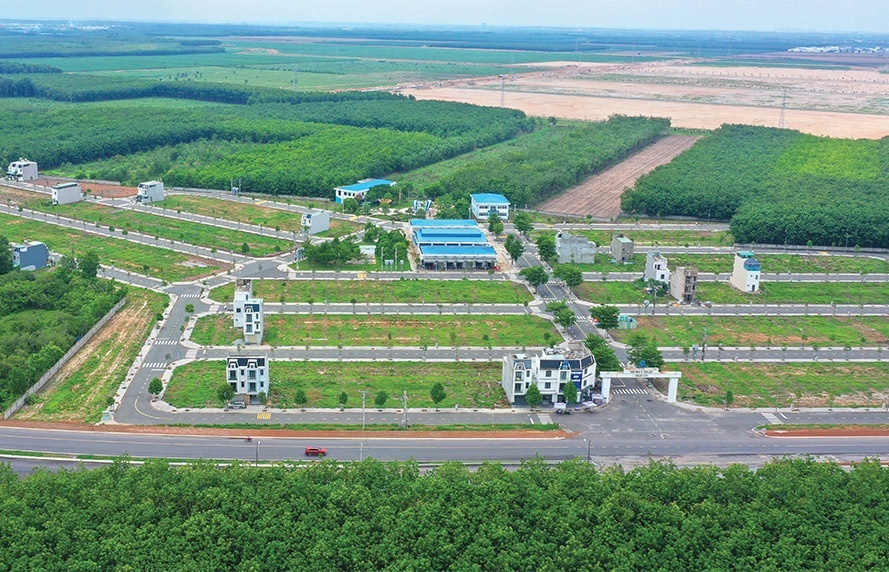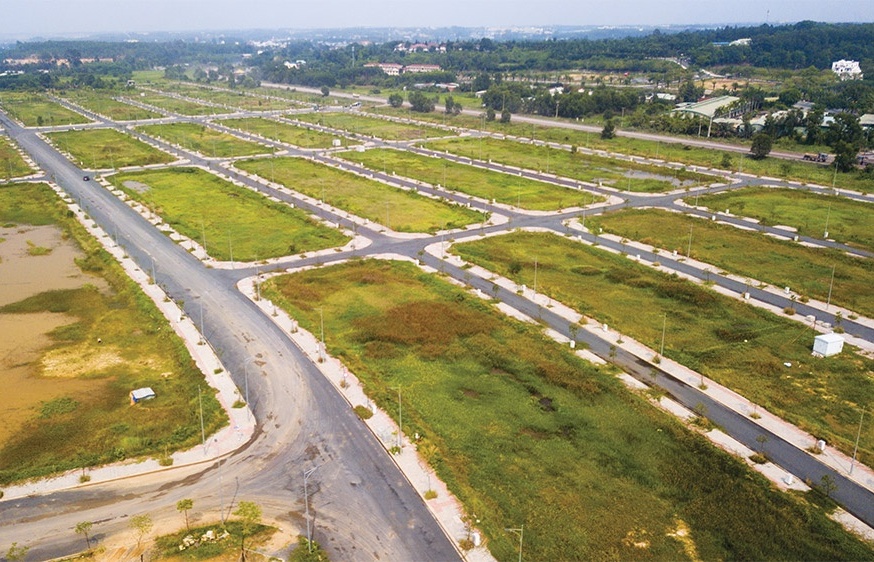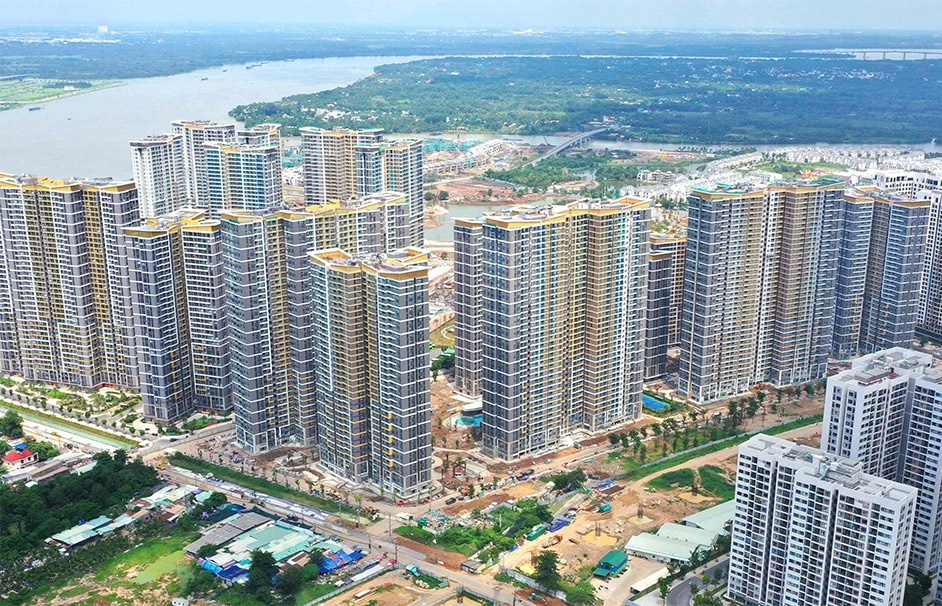Ready to make a big splash
A string of resort-style hotels are planned along Vietnam’s central and southern coastline. But new resorts not only face regional competition from renowned hotspots in Thailand, Indonesia and Malaysia, but also from established counterparts in Vietnam. As the developers queue Ngoc Son wonders if there is room for everyone?
Despite recent regional setbacks including SARS, the ongoing bird flu scare, and the recent tsunami disaster in South Asia, the future for Vietnamese tourism looks set to shine.
With beautiful stretches of beaches, breathtaking mountains, tropical forests, and home to extraordinary cultural sites, the once war-torn country expects to welcome 3.2 million foreign visitors this year.
If all goes to plan, the targeted year-to-year growth will see a record haul of eight million tourists arriving in 2010. By that stage, new beach resorts will be a major feature along the Vietnamese coast.
More traditional beach destinations Bali and Phuket are now considered to be overdeveloped. This provides a window of opportunity for Vietnam.
Considered safe, with an improving investment environment, Vietnam is fast becoming an alternative for international developers hoping to cash in on one of the fastest growing tourism markets in the world.
Both foreign and Vietnamese developers are shunning the big cities for untapped beaches with designs to build the most luxurious resorts in the Southeast Asia from the historic Hoi An town, past Danang, up to Hue imperial city.
The Hong Kong-built Furama in Danang has been the only five-star resort in the region for almost a decade. But now next to the Furama, Magnum Group is building 150 luxury villas alongside another five upscale hotels that are in the pipeline.
Further down south – next to the Magnum project – are two other projects proposed by Silver Shores and Millennium Group with estimated investment capital of $86 million and $60 million respectively.
Developers have registered to build a range of resorts in the coastal regions from Furama down to Cua Dai beach by Hoi An where American-backed The Nam Hai Resort is about to open 60 bungalows and 60 residential villas next year.
To the north of the Furama, Son Tra peninsula has reeled in six resort projects with total investment capital of $120 million.
This newly exploited area will be connected to Lang Co beach in Thua Thien-Hue province by the Hai Van tunnel, which is to be opened in the next four months, and will shorten the trip from Danang to Hue by an hour and a half.
Along Hue’s coast, new resorts are getting off the ground, including the 80-room Abalone Resort and Spa, an 80-villa complex bankrolled by Hong Kong developers as well as the resort recently planned by the Victoria Hotels and Resorts group.
“Central Vietnam is poised to become an important new destination, ranked alongside Langkawi in Malaysia, Cebu in the Philippines and Hainan Island in China,” said Paul Stoll, Furama general manager.
A string of resorts are taking shape along the 1,700-km World Heritage Road that stretches from Quang Binh in the north to Phan Thiet in the south.
This tourism initiative was proposed by Stoll a few years ago and comprises of four UNESCO World Heritage sites: Hoi An historic town, My Son ruins, Hue imperial city and Phong Nha-Ke Bang national park.
There has also been talk of drawing international hotel management companies such as Starwoods, Marriott or Hilton to this area in the future.
Luxury resorts have even been built in low-profile locations such as My Canh beach in Quang Binh, Bai Dai beach in Binh Dinh and Tuy Hoa town in Phu Yen.
But with such fierce development the question arises whether sufficient tourists will come to fill them.
Overcoming poor infrastructure is one of the biggest challenges for the region. The number of tourists is growing but the success of resort developments relies on easy access.
Road and railroad transport from Hanoi and Ho Chi Minh City, as well as from Laos and Thailand, is quite time-consuming.
In central Vietnam there is only one international airport, in Danang, a domestic one in Thua Thien-Hue and two other local airports are to open in the near future in Quang Nam and Quang Binh.
Vietnam Airlines flies to Danang and Hue from Ho Chi Minh City and Hanoi but getting international flights to the area has been never easy.
In recent years Thai Airways, Pacific Airlines and Far Eastern Airlines have all suspended flights from Hong Kong, Bangkok and Taipei to the region.
Silk Air, an affiliate of Singapore Airlines, has recently flown from Singapore to Danang, but the number of passengers boarding the flights is so small that there is question over whether the route will be axed from their schedule.
New resorts in Vietnam would not only have to compete with well-established hotels in more popular beach destinations in Southeast Asia, but also with resorts in the south of Vietnam.
“Central Vietnam will have much competition from places within Vietnam such as Nha Trang, and in the future, Phu Quoc island,” said Karl Derek John, managing director of Contacts International Hospitality Group.
The latter two areas are growing to become prime beach destinations and new resorts are getting off the ground.
Nha Trang has managed to build a strong reputation as a beach destination with Ana Mandara, VinPearl, Sunrise and the soon-to-be-opened Rusalka resorts. Cam Ranh Bay has so far attracted more than 50 resort projects.
Phu Quoc island, where there are currently three or four small resorts and many unspoiled beaches, has the potential to become a regional hotspot if it receives adequate investment and builds an international airport.
Phan Thiet could also become a major player on the domestic front, with a development by American-bankrolled South Fork company, which plans to build thousands of villas and a number of hotels, as well as a Disneyland-style amusement park on a 900-hectare site.
However, finding and training staff for such elaborate resorts in coastal areas remains an issue.
“Finding good quality staff is always a challenge in Vietnam because there are insufficient high-quality hotel schools,” said John.
“Most hotels have to conduct their own training, which is costly and time-consuming.”
Managers of operating hotels in the region have already complained about staffing problems although the number of properties in the area remains small.
With the spate of developments on the cards, some industry insiders have raised concerns about a possible bubble but others claim more heavyweight players means simply Vietnam would become more popular in the eyes of foreign tourists.
What the stars mean:
★ Poor ★ ★ Promising ★★★ Good ★★★★ Very good ★★★★★ Exceptional
Latest News
More News
- Trump's trade policies could shape Vietnam's economic outlook: Dragon Capital (November 15, 2024 | 16:56)
- The One Destination partners with Singapore investor and institutional fund to build ESG real estate complex (November 11, 2024 | 10:32)
- Stabilising measures must sit alongside land price hikes (November 07, 2024 | 09:56)
- CapitaLand Development records strong bookings for Orchard Hill (November 07, 2024 | 08:19)
- Public transport and real estate: The rise of Transit Oriented Development (November 05, 2024 | 15:06)
- Funding flows to second-tier localities (November 03, 2024 | 15:24)
- Hanoi has long road to travel in becoming a smart city (November 03, 2024 | 15:00)
- Nam Long Group hands over keys to Akari City Phase 2 (October 30, 2024 | 18:29)
- KTG Industrial expands industrial footprint at Taitronics 2024 (October 29, 2024 | 14:46)
- Deal signed for sustainable development at Prodezi Eco-Industrial Park (October 26, 2024 | 10:02)



















 Mobile Version
Mobile Version